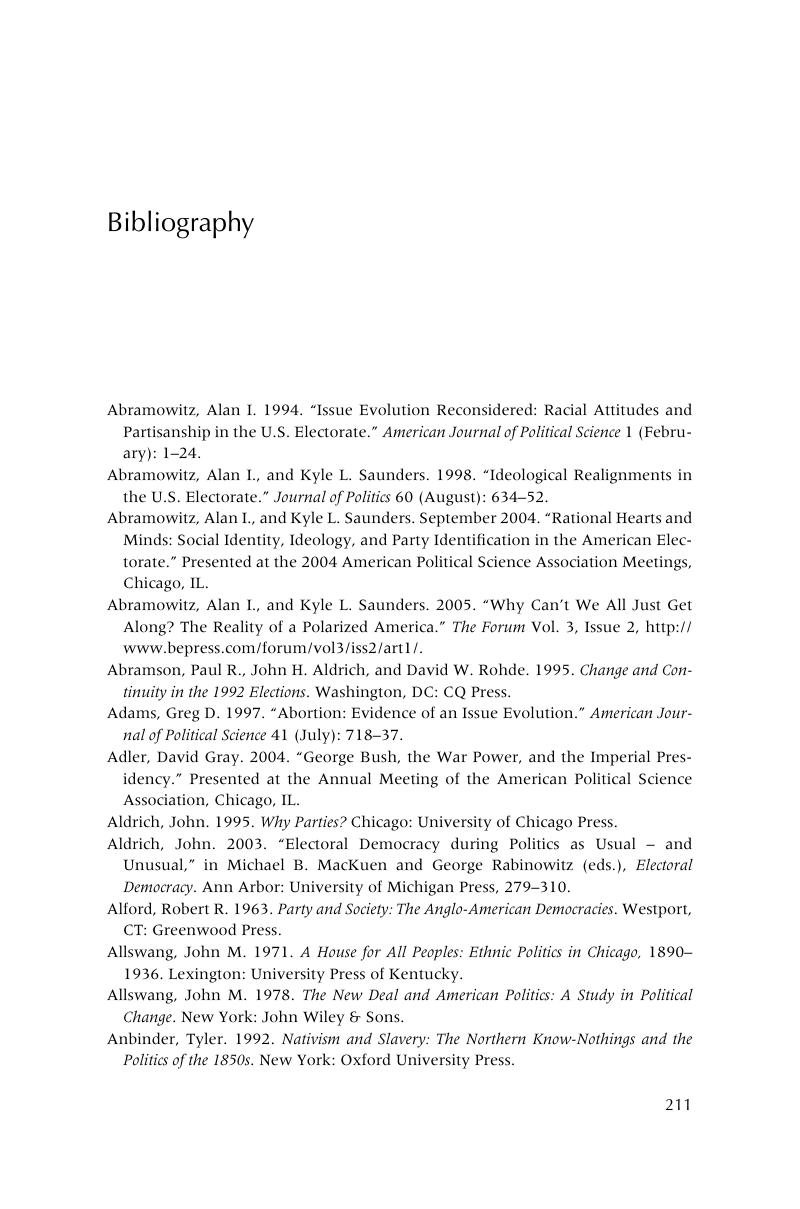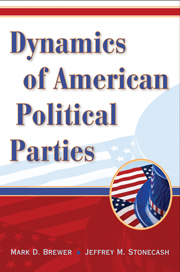Book contents
- Frontmatter
- Contents
- Figures and Tables
- Preface
- 1 DEMOCRACY, REPRESENTATION, AND PARTIES
- 2 OVERVIEW: SOCIAL CHANGE AND SHIFTING PARTY BASES
- 3 TAKING SHAPE: PARTY COALITIONS IN THE POST-BELLUM NINETEENTH CENTURY
- 4 REPUBLICAN ASCENDANCY AND DEMOCRATIC EFFORTS TO RESPOND, 1896–1928
- 5 TABLES TURN: THE NEW DEAL ERA AND DEMOCRATIC DOMINANCE, 1932–1948
- 6 THE DEMOCRATIC DRIVE TO THE GREAT SOCIETY
- 7 REPUBLICANS: REASSERTING CONSERVATIVE PRINCIPLES AND SEEKING A MAJORITY
- 8 THE STRUGGLE OF DEMOCRATS TO INTERPRET CHANGE AND RESPOND
- 9 GEORGE BUSH AND FURTHER POLARIZATION
- 10 THE 2008 ELECTION AND ITS INTERPRETATION
- 11 PARTIES AND THE PURSUIT OF MAJORITIES
- Bibliography
- Index
- References
Bibliography
Published online by Cambridge University Press: 05 June 2012
- Frontmatter
- Contents
- Figures and Tables
- Preface
- 1 DEMOCRACY, REPRESENTATION, AND PARTIES
- 2 OVERVIEW: SOCIAL CHANGE AND SHIFTING PARTY BASES
- 3 TAKING SHAPE: PARTY COALITIONS IN THE POST-BELLUM NINETEENTH CENTURY
- 4 REPUBLICAN ASCENDANCY AND DEMOCRATIC EFFORTS TO RESPOND, 1896–1928
- 5 TABLES TURN: THE NEW DEAL ERA AND DEMOCRATIC DOMINANCE, 1932–1948
- 6 THE DEMOCRATIC DRIVE TO THE GREAT SOCIETY
- 7 REPUBLICANS: REASSERTING CONSERVATIVE PRINCIPLES AND SEEKING A MAJORITY
- 8 THE STRUGGLE OF DEMOCRATS TO INTERPRET CHANGE AND RESPOND
- 9 GEORGE BUSH AND FURTHER POLARIZATION
- 10 THE 2008 ELECTION AND ITS INTERPRETATION
- 11 PARTIES AND THE PURSUIT OF MAJORITIES
- Bibliography
- Index
- References
Summary

- Type
- Chapter
- Information
- Dynamics of American Political Parties , pp. 211 - 232Publisher: Cambridge University PressPrint publication year: 2009



